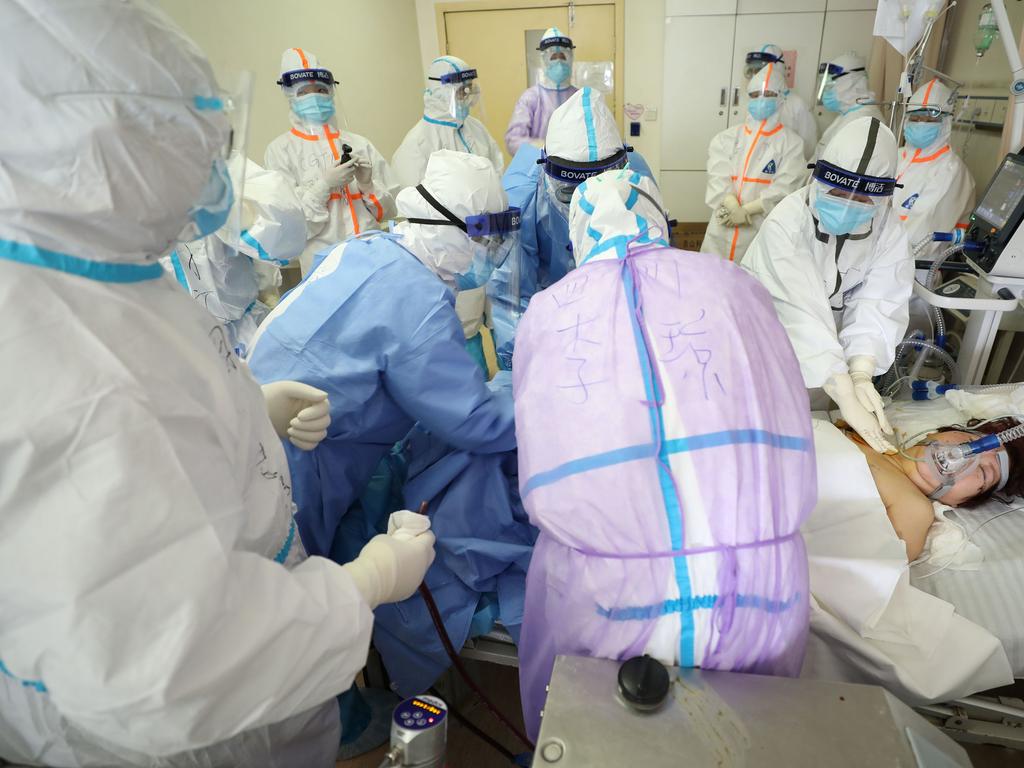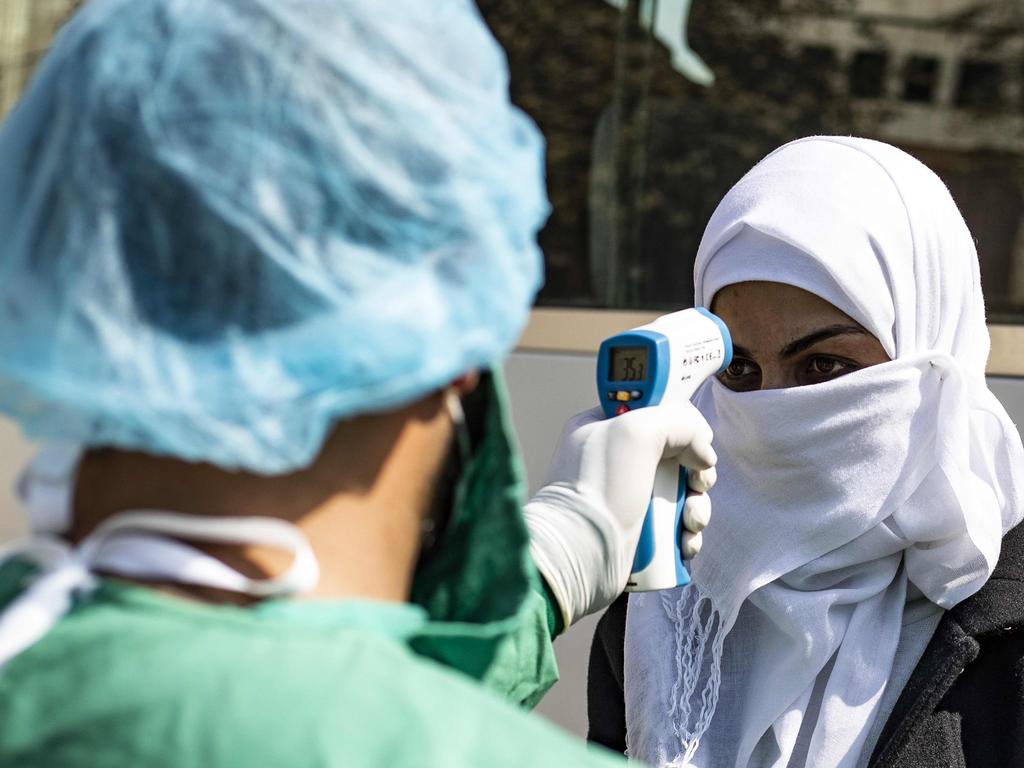‘Destined to fail’: Why Australia is unable to stop the spread of deadly coronavirus
Quarantine has beaten some of the world’s worst diseases but it’s not working for coronavirus – and the only thing that will is out of Australia’s reach.
Quarantine doesn’t work. But there’s only one way to control the spread of coronavirus – and it’s a drastic step that goes against Australia’s way of life.
COVID-19 is a highly infectious disease. But we have a pretty good idea of how it works.
Cough droplets. Mucus. Sweat. Perhaps even faeces.
The virus isn’t, fortunately, airborne. But these little packets of contagion can be sprayed about to linger on surfaces for more than a week.
The big complication, however, is it can be contagious even before a sufferer begins to feel unwell. And that makes the only reliable way to stop its spread a problem.
Can we isolate people who aren’t even showing symptoms?
“I understand this whole situation may seem overwhelming, and that disruption to everyday life may be severe. But these are things that people need to start thinking about now,” says Dr Nancy Messonnier, director of the CDC’s National Center for Immunisation and Respiratory Diseases.
Last night, Attorney-General Christian Porter warned it may soon become necessary to activate drastic measures under the 2015 Biosecurity Act.
Most notably, the power to ban gatherings and impose lockdowns.
“There are two broad ranges of powers that people may well experience for the first time,” Porter said.
“It could require any Australian to give information about people that they’ve contacted or had contact with so that we can trace transmission pathways. It will also mean that Australians could be directed to remain at a particular place or indeed undergo decontamination.
“Secondly, a very important power that may be experienced for the first time — and that we will be monitoring very carefully — is the declaration of a human health response zone.”
QUARANTINE QUANDARY
Another coronavirus, SARS, was successfully contained by strict quarantines in 2003.
On January 27, barely a week after news broke of the novel virus outbreak, the Chinese city of Wuhan was put under lockdown.
RELATED: At least 45 countries infected
RELATED: Should I cancel my travel plans?
China’s authoritarian Communist Party hoped to halt the march of this strange new disease.
Instead, the radical act only encouraged people – be they party members, executives or commoners – to find ways to escape. And, as COVID-19 had already quietly spread, they likely carried the virus with them.
As a result, more and more cities – even entire provinces – have been ordered sealed off. Hundreds of millions of people are confined to their homes.
“We see empty streets in Wuhan and other cities, where people are unable or unwilling to go outside for fear of contracting the virus,” Professor Benno Torgler and Dr David Savage writes in The Conversation.
“It is natural that we want to prepare for the perceived threat of similar disruption to our own communities.”

China’s economy has taken a dramatic hit.
But, after the long lag caused by COVID-19’s 14-day incubation period, case numbers have begun to decline. Keeping people apart appears to have been successful in reducing the transmission of the disease in areas already exposed.
Epidemiologists say this points to quarantine succeeding in slowing the disease’s spread.
Not halting it.
And that can be seen in the explosion of new cases around the world.
CONTAINMENT FAILURE
A new spike of cases in Washington state demonstrates the challenge health authorities face. It’s likely been circulating there, unseen, for weeks. It was probably bought there by tourists, defence personnel and entrepreneurs travelling to this international hub from around the world.
It took weeks for COVID-19 to incubate and hinder its hosts.
But that was plenty of time for it to get established in Washington State.
It’s the same story in Italy. Health authorities there are convinced Covid-19 had been silently circulating for weeks before erupting onto an unsuspecting health system.
RELATED: Steps you must take to avoid killer virus
RELATED: How the virus jumped from animals to humans

Slowing the spread of COVID-19 is vital. It’s necessary to prevent a tidal wave of patients swamping the health system.
Lengthening that wave, and reducing its peak, means more people will get adequate treatment.
Can Australia – and other non-totalitarian states – take the action necessary to achieve this?
The current approach won’t work for long.
Temperature tests don’t catch the disease in its early stages. So isolating sick patients is akin to shutting the proverbial stable door after the horse has bolted.
Tracking down and quarantining close contacts may have some effect. But, with COVID-19, this approach seems destined to fail. All it takes is for one transmission to be missed. And a recent medical study indicates up to two-thirds of those infected are being cleared.
International travel bans may have slowed the virus’ escape into the Australian population.
But it won’t keep it out.
Australian epidemiologists quietly fear that – like Washington state – it’s already loose. That it’s already spreading unnoticed through the population.
An explosion of infections could appear anytime.

PANDEMIC PAUSE
Wuhan is a ghost town. So are dozens of other major Chinese cities.
Schools have been closed. Offices abandoned. Factories shuttered.
Drones patrol the streets, warning everyone to stay indoors.
Those that don’t are detained.
Households have been ordered to send just one member of their family out for essential supplies only twice each week.
They must wear masks. They must wear gloves. Or they’ll be punished.
China’s Communist Party has distributed a smartphone app where people must report their health status. Green means clear. Yellow highlights risk (and a 7-day quarantine). Red means a 14-day quarantine.
It tracks your movements.
It reports back to authorities.
Then, authorities assess your circumstances and determine how much of a risk factor you are.
It’s a draconian response.
And even China’s tightly censored social media is full of reports of party officials and economic elites bypassing the bans.
But, it seems to be working.
Italy is attempting a similar approach. Checkpoints have been set-up outside infection hot spots. Quarantined towns are sealed-off to all but those with special permission.
Officials there are calling it a short-term “sacrifice” for the common good.
South Korea is taking a different approach: It’s asking – not ordering – the population of the infected city of Daegu to stay indoors. Elsewhere, South Koreans have begun to stockpile supplies. Just in case.
“It is a logical thought process: if the virus comes to your area, you want to be able to reduce your contact with others but also ensure you can survive that withdrawal period,” The Conversation essay reads.
‘SOCIAL DISTANCING’
The Attorney General warns: “It’s very important to understand, going forward, that (the Biosecurity Act) is a power that can be used for either localised disease outbreaks in Australia or indeed to restrict individuals from attending places where a large number of people may otherwise choose to gather, such as shopping centres, schools or work.
“These are challenging times going forward, and these will be some of the first times that these important powers may be used.”
Reducing community transmission is a priority.
Soon, quarantining the sick and isolating their contacts will become meaningless.
Home detention is an option. But, in a liberal democracy, how will people react?

During the Spanish Flu pandemic a century ago, communities figured out through trial and error the best way to slow its spread.
Closing schools. Cancelling church services and sporting events. Working from home.
Eventually, all gatherings in confined spaces were outright prohibited.
Meanwhile, in Italy, the public is expressing concern at the implications of extended quarantine lockdowns.
“As always in Italy, individual behaviours are hard to govern,” school of government director Giovanni Orsina tells The Washington Post.
“But it feels to me like there is a willingness to compromise on freedom in the name of protection.”
ACT NOW
To slow the spread of COVID-19, epidemiologists are urging governments and business to consider such actions now. The Centres for Disease Control in the US says we have a brief window of opportunity to prepare and plan.
Federal, state and local governments must be prepared to impose “social distancing” as soon as the virus appears.
Schools should prepare for “internet-based teleschooling”.
Workplaces must find ways to protect personnel while maintaining services.
“Now is the time for businesses, hospitals, communities, schools and everyday people to begin preparing,” Dr Messonnier says. She spoke to reporters via teleconference. “For adults, businesses can replace in-person meetings with video or telephone conferences and increase teleworking options.”
And households must calmly prepare for isolation – be it voluntary or enforced.
“Stocking up on supplies is a valid response. It indicates citizens are not helplessly reacting to an outside circumstance but instead are thinking forward and planning for a possible situation,” The Conversation essay reads.
Jamie Seidel is a freelance writer | @JamieSeidel



